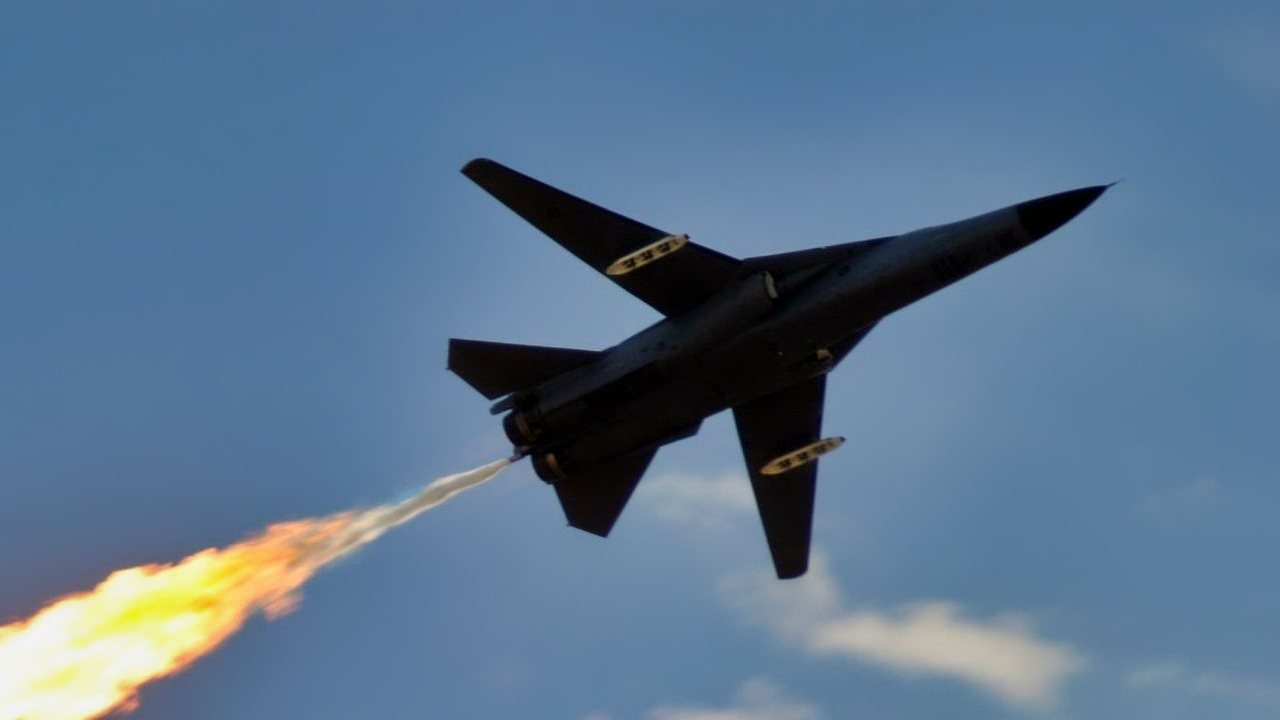Why the F-111 Aardvark Was a Game-Changer in Military Aviation
The General Dynamics F-111 Aardvark was a versatile supersonic, medium-range, multi-role combat aircraft serving the U.S. Air Force and the Royal Australian Air Force.
Summary and Topline Points You Need To Know: The General Dynamics F-111 Aardvark was a versatile supersonic, medium-range, multirole combat aircraft serving the U.S. Air Force and the Royal Australian Air Force.

-It featured variable-sweep wings, advanced avionics, and electronic countermeasures, allowing it to perform a variety of missions, including strategic bombing, reconnaissance, and electronic warfare.
-The F-111 replaced several older aircraft and set speed and distance records. It saw action in conflicts from Vietnam to Desert Storm. Eventually, it was replaced by the F-15E Strike Eagle and the F/A-18F Super Hornet. The F-111 remains a remarkable example of Cold War-era aircraft engineering.
The F-111 Aardvark was a Unique Bird
The General Dynamics F-111, better known in Air Force circles as the Aardvark, was a supersonic, medium-range, multirole combat aircraft that served not only the U.S. Air Force, but the air forces of foreign nations – notably the Royal Australian Air Force (RAAF).
The Aardvark served from 1967-1998. It was designed for a number of roles, including attack, strategic bombing, reconnaissance, and electronic warfare (EW). The F-111 was the first production aircraft to feature variable-sweep wings, which allowed it to adjust its wing configuration based on mission requirements.
Why the F-111?
The F-111 replaced several aircraft in both the arsenals of the Air Force and the RAAF.
In the U.S. Air Force, the F-111 replaced the Republic F-105 Thunderchief and the Convair F-102 Delta Dagger in the tactical fighter role. It also replaced the Boeing B-47 Stratojet. In certain strategic bombing missions, the F-111 even took on the role otherwise played by the legendary B-52 Stratofortress.
For the Australian Air Force, the F-111 replaced the English Electric Canberra in the tactical role.
The F-111 was capable of carrying a wide range of weapons, including laser-guided bombs, conventional bombs, and air-to-surface missiles. Its internal weapons bay could accommodate up to 20,000 pounds of ordinance. The F-111 was further equipped with terrain-following radar, enabling it to fly at low altitudes while maintaining high speeds, making it an effective ground-attack aircraft.
Defensively, the Aardvark employed electronic countermeasures pods to protect it from enemy radar and missile systems. The bird featured advanced avionics for its time and a sophisticated autopilot system, which allowed it to perform complex maneuvers and operate in adverse weather conditions.
Aardvarks were designed for a variety of missions, including interdiction, Close Air Support, deep penetration strikes, and, as noted above, EW – due to its aforementioned avionics and ECM packages, the Aardvark used very often for EW missions.
This warbird had a maximum range of 3,565 miles with external fuel tanks. Its operational ceiling was 60,000-plus feet. An Aardvark had a crew of two – one pilot and one weapons system officer.
Some Records
The F-111 Aardvark set several speed and distance records. In May 1967, it became the first production aircraft to cross the Atlantic from the United States to Europe without refueling. The Aardvark set the record for the longest supersonic flight, flying more than 3,500 miles at an average speed of Mach 1.35. An F-111’s maximum speed was Mach 2.5.
The F-111 saw action in several conflicts, from the Vietnam War to Operation Desert Storm and Operation Allied Force. The Australians purchased this system in 1973 and deployed it until 2010.

The British Royal Air Force purchased a variant of the Aardvark, the F-111K, but London canceled the program before any aircraft were delivered. Instead, the UK purchased the Panavia Tornado. It was clearly Britain’s loss. Just ask the Aussies, who swore by the F-111.
What Replaced the Aardvark?
The F-111 was eventually replaced by newer and more sophisticated birds. For the Americans, the F-15E Strike Eagle in the tactical strike role knocked out the need for the F-111. The F-15E is a derivative of the F-15 Eagle air superiority fighter, modified to perform air-to-ground missions.
The RAAF replaced the F-111 with the F/A-18F Super Hornet. The Super Hornet is a larger and more advanced version of the original F/A-18 Hornet, which is an American plane that is operated by the RAAF as well. The Super Hornet was intended to serve as an interim aircraft until the arrival of the F-35 Lightning II from the United States.
The Aardvark was an excellent plane that performed critical roles throughout the Cold War era.
We’ll never see a bird quite like her again.
Author Experience and Expertise: Brandon J. Weichert
Brandon J. Weichert, a National Interest national security analyst, is a former Congressional staffer and geopolitical analyst who is a contributor at The Washington Times, the Asia Times, and The-Pipeline. He is the author of Winning Space: How America Remains a Superpower, Biohacked: China’s Race to Control Life, and The Shadow War: Iran’s Quest for Supremacy. His next book, A Disaster of Our Own Making: How the West Lost Ukraine, is due October 22 from Encounter Books. Weichert can be followed via Twitter @WeTheBrandon.
All images are Creative Commons or Shutterstock.
From the Vault
Russia Freaked Out: Why the U.S. Navy 'Unretired' the Iowa-Class Battleships
Battleship vs. Battlecruiser: Iowa-Class vs. Russia's Kirov-Class (Who Wins?)


